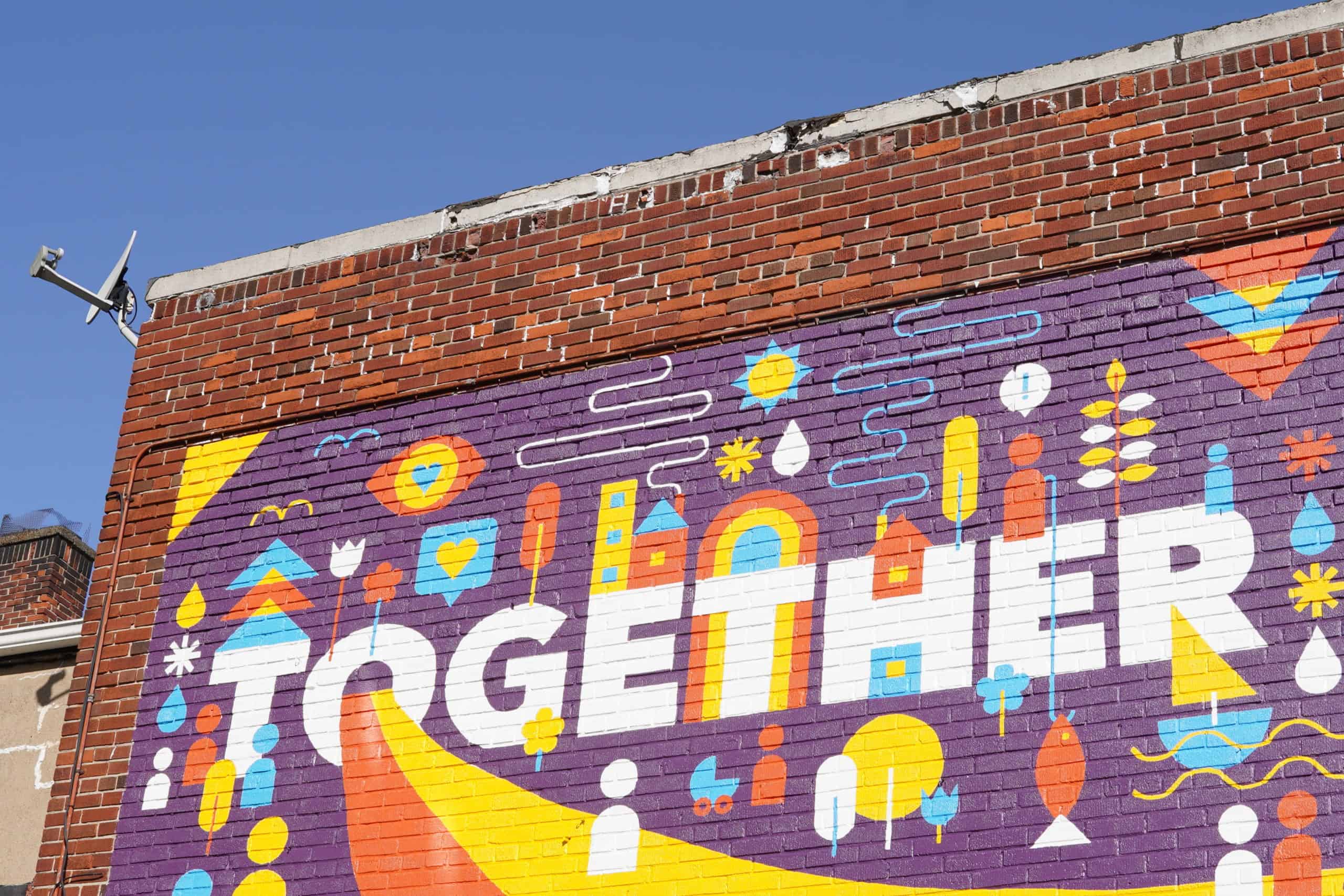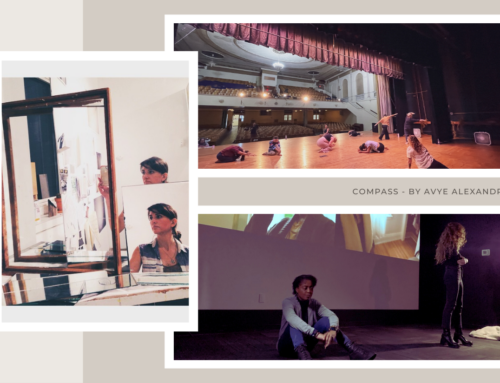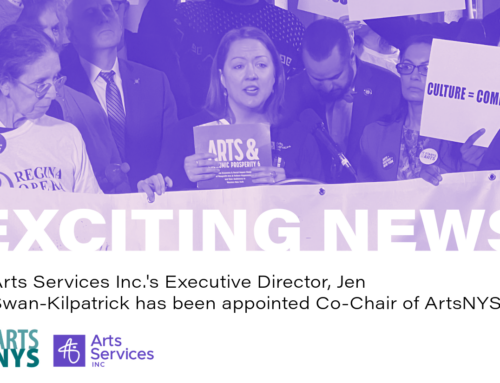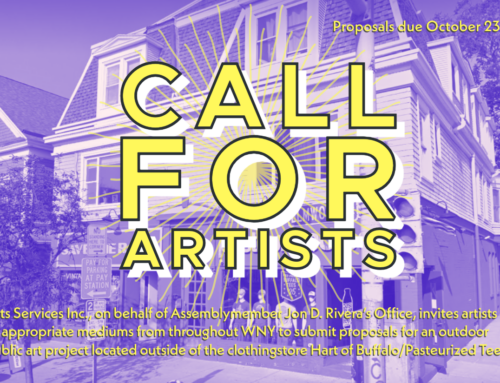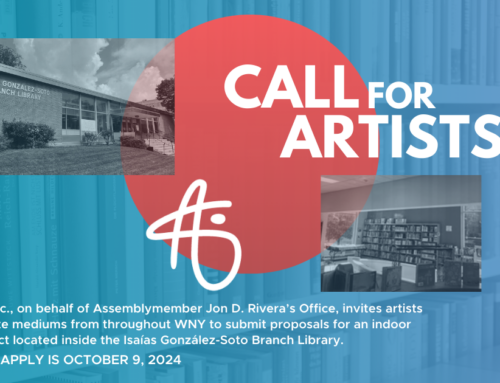Murals are springing up around Western New York all the time, but do you ever sit and wonder where they come from or how they came to be?
We can’t speak on behalf of all the murals around town, but we’ve been at the helm in a few of them and thought it might be fun to shed a little light on our mural creation process as well as share our brand new mural trail map which lays out the 30+ murals that we’ve had a hand in creating. This new interactive map also has driving directions for 5 different mural trails that you can traverse for day-trip adventures you don’t even have to leave your car for!
So how does a mural come about?
- An idea – Some mural propositions can come from business owners looking to spruce up the outside or inside of their building like the mural on 550 Seneca Street (“Welcome to the Hydraulic District” by Cassandra Ott). Other propositions come from government officials or other local leaders who want to brighten a public space with a mural or other public art project like the mural on 4220 Bailey Avenue (“The Future Is Amherst” by Jalen Law, currently in progress as of November 2022).
- Finding the “how” with ASI – ASI has had different roles in different murals but some typical roles that we have are: funders (many murals on our list are funded through Statewide Community Regrants); fundraisers (ASI can host tax-deductible donations on behalf of an organization like the “Giambra Legacy Mural” by Frank Coppola); and contractors (ASI can fiscally sponsor an artist to allow an individual to be paid through government funding like the “Together” mural by Casey Kelly Perez). Another way that ASI can help in the mural process is by writing a call for work, asking artists to submit proposals for the new mural. In that call, we go over things like budget, insurance, and mural longevity with the business to make sure that they find the right artist for the job.
- Artist selection – Once the proposals are in, many murals are chosen through a panel review with community stakeholders. These stakeholders often include the owner of the building where the mural will be, neighborhood groups like block clubs, elected representatives, or other local artists. When the winning proposal is identified, contracts are signed and it’s time to start painting!
- Installation – Murals are typically installed in the warmer weather like late spring to early fall and can be made from lots of different materials like paint or wheat paste. Did you know that some murals are painted by projecting the design onto the wall while the artist traces over it? Some installations only take a few days to a week while others can be much longer. Often artists will have to face their fears while painting for hours at a time on a scissor lift.
- Reveal – When the mural is finished, there is usually a press conference to announce the reveal and to celebrate the artist. We love murals and similar public art projects because once they’re finished, they can be enjoyed by everyone walking by for years to come.
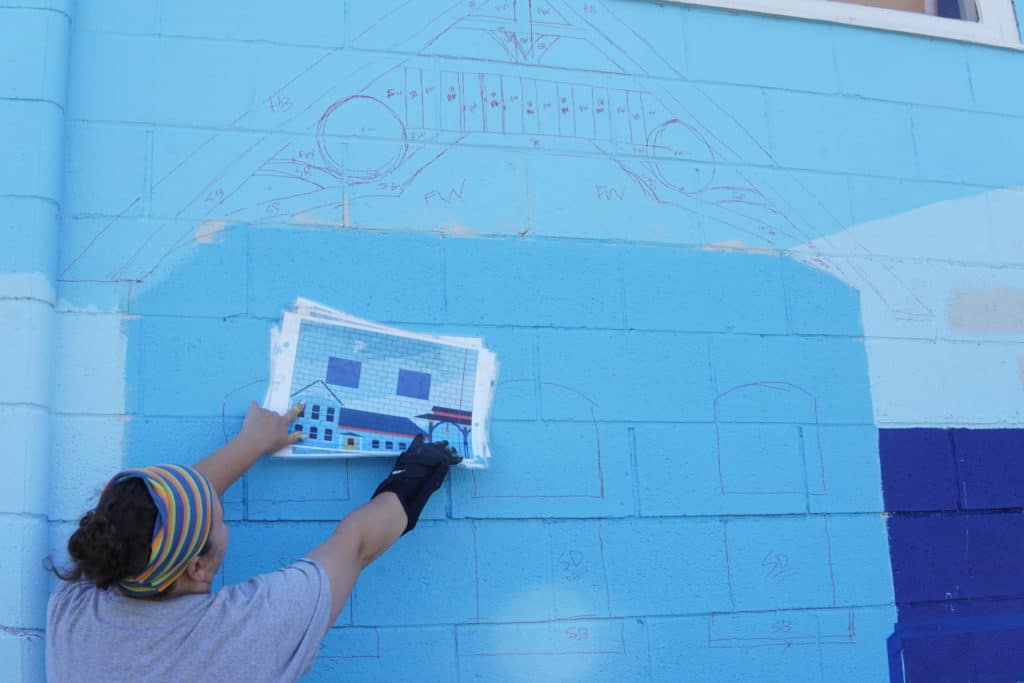
Artist Audra Linser compares her scaled design map to the full-sized mural outline for the Village of Hamburg mural.
Now that we’ve pulled back the curtain on how many murals are created, we invite you to come and see some of them for yourself! The map below highlights some of the public art projects that ASI has helped to create, as well as a map to the 12 murals created for the “Niagara County by the Numbers: An Interactive Mural Trail” project funded by an SCR grant.
If you take a picture of yourself in front of one of the ASI murals, post it on Instagram and tag us or use the hashtag #ASIMuralTrail and we’ll share your photo on our feed!

